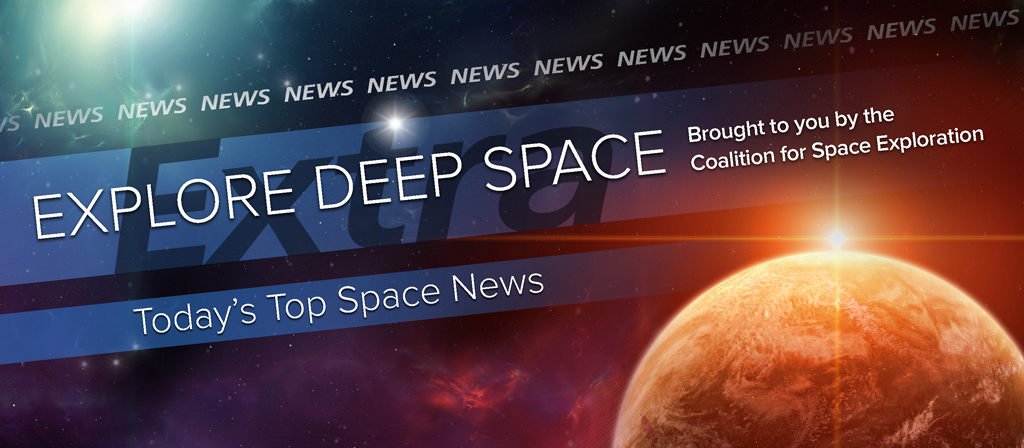In Today’s Deep Space Extra… NASA’s human deep space ambitions rely on the largest, most powerful rocket ever developed.
Human Deep Space Exploration
Boeing builds the most powerful rocket ever made
CNBC (1/26): Boeing tailors its development of NASA’s Space Launch System exploration around one objective: start human explorers on missions of deep space exploration. Nothing so powerful has ever been developed for space flight. The big rockets first unpiloted test flight is set for late 2018.
SLS engines prepare for Stennis tests AR affordability focus for new RS-25s
NASAspaceflightnow.com (1/26): NASA, Boeing and Aerojet Rocketdyne are prepared for the next round of tests of the RS-25 rocket engine as a first stage propulsion source for the Space Launch System heavy lift rocket. The RS-25 and its successors began life as a reusable rocket engine for the space shuttle fleet. The tests will get underway at the Stennis Space Center.
Buzz Aldrin: ‘Planet 9′ proves how important space exploration is
Time (1/25): Recent evidence for an undiscovered planet, “Planet 9,” illustrates the prospect that exploration within our own solar system is unfinished business, according to retired NASA astronaut Buzz Aldrin, Apollo 11’s lunar module pilot and one of the first humans to walk on the moon.
How going to space changed this astronaut’s outlook on life
Huffington Post (1/26): “We are doing something only a small number of people have done. You are one of them,” said former NASA astronaut Leland Melvin, recalling the first of his two space shuttle missions. “The things we thought were a big deal are not a big deal.” Melvin journeyed to the International Space Station twice, in February 2008 and November 2009. The first joined U.S., European and Russian astronauts.
The right stuff, online: Space agency crowdsources astronaut test
Space.com (1/26): The European Space Agency will turn to crowd sourcing to help it with the selection of future astronauts. “ESA is not currently running a selection campaign, but developing tests for astronaut selection takes time and needs to be done right,” according to Frank De Winne, head of the ESA astronaut center.
Space Science
How long would it take to travel to the nearest star?
Universe Today (1/26): Our closest stellar neighbor, Proxima Centauri, is part of a three star system and 4.24 light years distant. With current technologies, the trip would be multi-generational, requiring between 1,000 and 81,000 years. A theoretical fusion rocket would cut the travel time to 36 years.
Rogue planet finds home in biggest solar system ever seen
Space.com (1/26): A massive alien planet 2MASS J2126, discovered eight years ago, was long believed to be a planet without a star, a world wandering through interstellar space more than 100 light years from Earth. More study, however, revealed the distant planet circles a red dwarf star but at the astounding distance of 600 billion miles.
Virtual ‘Viking Mission Museum’ preserves and presents Mars lander history
Collectspace.com (1/26): NASA’s Viking 1, the spacecraft that achieved the first successful landing on Mars on July 20, 1976, stars in a virtual museum full of artifacts and memories from the historic mission.
Stardust brought back comet pieces 10 years ago
Discovery.com (1/26): A decade ago, NASA’s Stardust descent capsule settled onto the grounds of the U.S. Air Force Utah Test and Training Range with pieces of the Comet Wild-2, collected in 2004, as well as interstellar debris. Principal investigator Don Brownlee has been studying the rare materials ever since in search of clues about the realm between the planets and stars.
Low Earth Orbit
Challenger remembered
Spaceflightnow.com and CBS (1/26): June Scobee Rogers, wife of Dick Scobee, commander of NASA’s seven member shuttle Challenger crew, reflects on the Jan. 28, 1986 tragedy that claimed the lives of her husband and his astronaut teammates 30 years ago Thursday. “I still hear from people who can tell me exactly where they were and what they were doing, if they were old enough, at the time of the accident, and it’s amazing to me,” she told CBS News. “They want to share their story with me. It’s as though they are sharing the experience of their own grief with me.”
Commercial to Low Earth Orbit
Losing bidders won’t protest NASA commercial cargo awards
Space News (1/26): Competitors Boeing and Lockheed Martin say they will not contest NASA’s recent selection of Orbital ATK, Sierra Nevada and SpaceX for contracts to re-supply the six person International Space Station between late 2019 and 2024.

